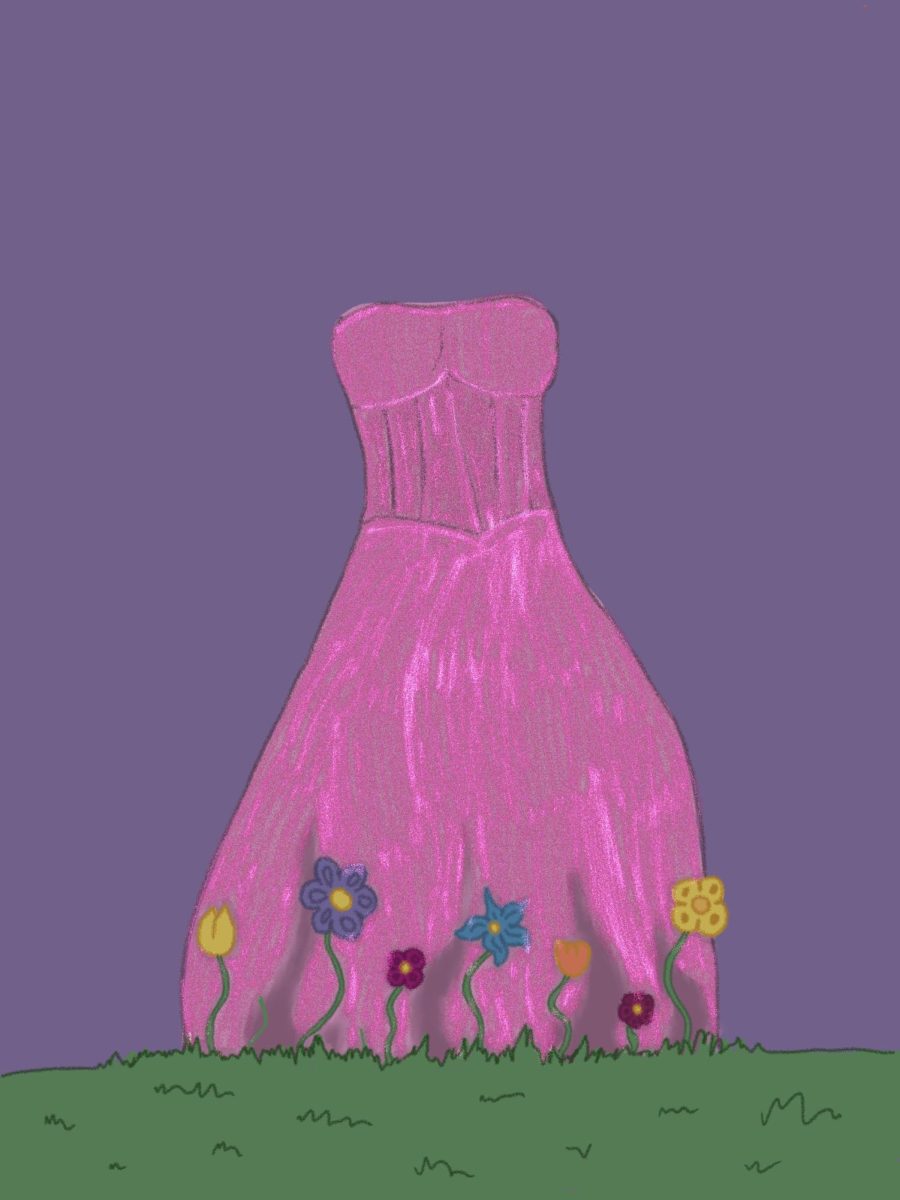You type in, “prom dresses” into your Google search bar. Glitter and polyester fill your screen. It is human nature, and often the only option for many people to find the cheapest dress possible as it is only for one night. Polyester and glitter are a common theme among the cheaper options.
Prom is a very important event for many young people across America. It is a right of passage socially as many people show up in their most formal attire and often grab a date to go with.
Some popular styles recently include satin, corset tops, and low fronts creating a “desirable look”. However, these styles that are considered trendy are often thrown away or donated right after the event.
Even though these styles are considered trendy one year, the next year they could be considered undesirable, making even donated prom dresses unsustainable because thrift stores cannot sell the dresses due to lack of interest.
These dresses, even with the right intentions when donated, are often thrown away and end up in landfills. A common theme within the fast fashion community.
The plastic-based materials that make up most of these dresses break up into microplastics and end up in the ocean, and many different environments around the world, severely harming it.
Glitter is very hard to pick up and is one of the hardest microplastics to contain and clean up. According to PBS, “Glitter is already a microplastic, making it easier to spread and contaminate our soil, air, water, and food. It’s widely accessible, pervasive in nature.” (PBS)
Polyester is another popular prom fabric and can even release microplastics into water sources and eventually the environment. According to CBS, “However, the laundry process also releases tiny fibers known as microplastics, which can be harmful to marine life. While polyester lasts for years, longevity is a double-edged sword — clothes can be worn many times but will likely end up in landfill, and don’t biodegrade.” (CBS)
What are some alternatives? Thrifting your prom dress or participating in the prom dress swap.
While it is nearly impossible to find a dress that is not wildly expensive, yet environmentally conscious, not participating in the constant cycle of fast fashion is the next best option.
Many thrift stores have a formal ware section that offers beautiful, inexpensive, and second hand dresses, that may guarantee that you have a unique and sustainable dress for prom. These stores break the cycle of fast fashion by providing a second chance for many pieces at discounted prices, enticing customers.
An amazing event at our school that focuses on assessing the environmental issues of fast fashion dresses, as well as providing affordable options for students is the Prom Dress Swap event. This event replicates thrifting in the sense that it provides a beautiful dress on a budget, as well as giving new life to previously worn prom dresses. The event runs until May 24, 2024, in the Counseling Office. Be sure to check it out!
These and many other ways cut back on the environmental and monetary impacts that prom dresses have in our community.


